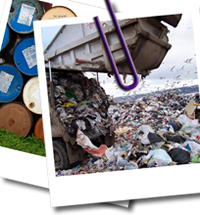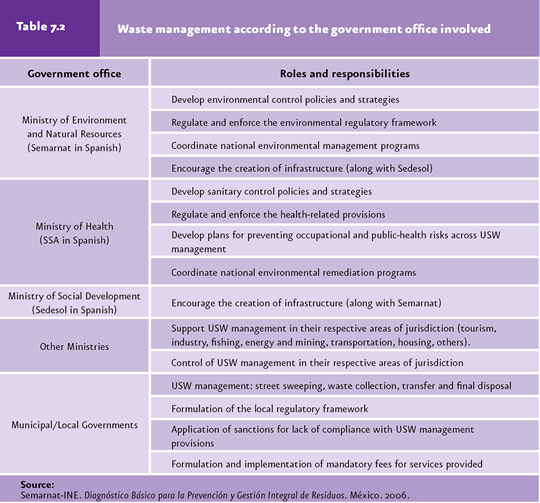
| CHAPTER 7. WASTES |
In Mexico, several instruments exist for the regulation, prevention and integrated management of waste (also refer to the Box Environmental regulation of wastes in Mexico). There are four major instruments included in both, local regulations (Federal District and Guadalajara) and the General Law for Waste Prevention and Integrated Management. First, the Waste Management Governing Programs, which propose measures to reduce waste generation, discrimination at the source, collection and transportation, as well as proper use, treatment and final disposal. Examples of these programs are the National Program for Waste Prevention and Integrated Management and the State and Municipal Programs for Waste Prevention and Integrated Management -as is the case in the Federal District, Queretaro and Quintana Roo-. Second, there are inventories that serve as the basis for decision-making to reduce waste generation, as well as to provide indicators on the physical state and characteristics of waste to those related to the generation, collection, treatment or final disposal of waste. The three government levels must develop, update and disseminate the inventories of the generation of USW, HW and wastes requiring special management. Additionally, they are responsible for elaborating inventories of open and clandestine dumps. Third, there is the discrimination of waste into organic and inorganic wastes at households, industries, commercial sites, services and other public and private sites, education centers, government offices and similar places, and their subsequent disposal in separate containers for collection or recycling by the public collection service, in order to facilitate the use, treatment and final disposal of waste. Last, the solid waste management plans are worth mentioning, which are instruments focused on reducing the generation of USW and HW, as well as on facilitating their gathering and increasing the reusable fraction. Likewise, a number of entities are involved in the waste management issue, the roles of which are summarized in Table 7.2.
|
